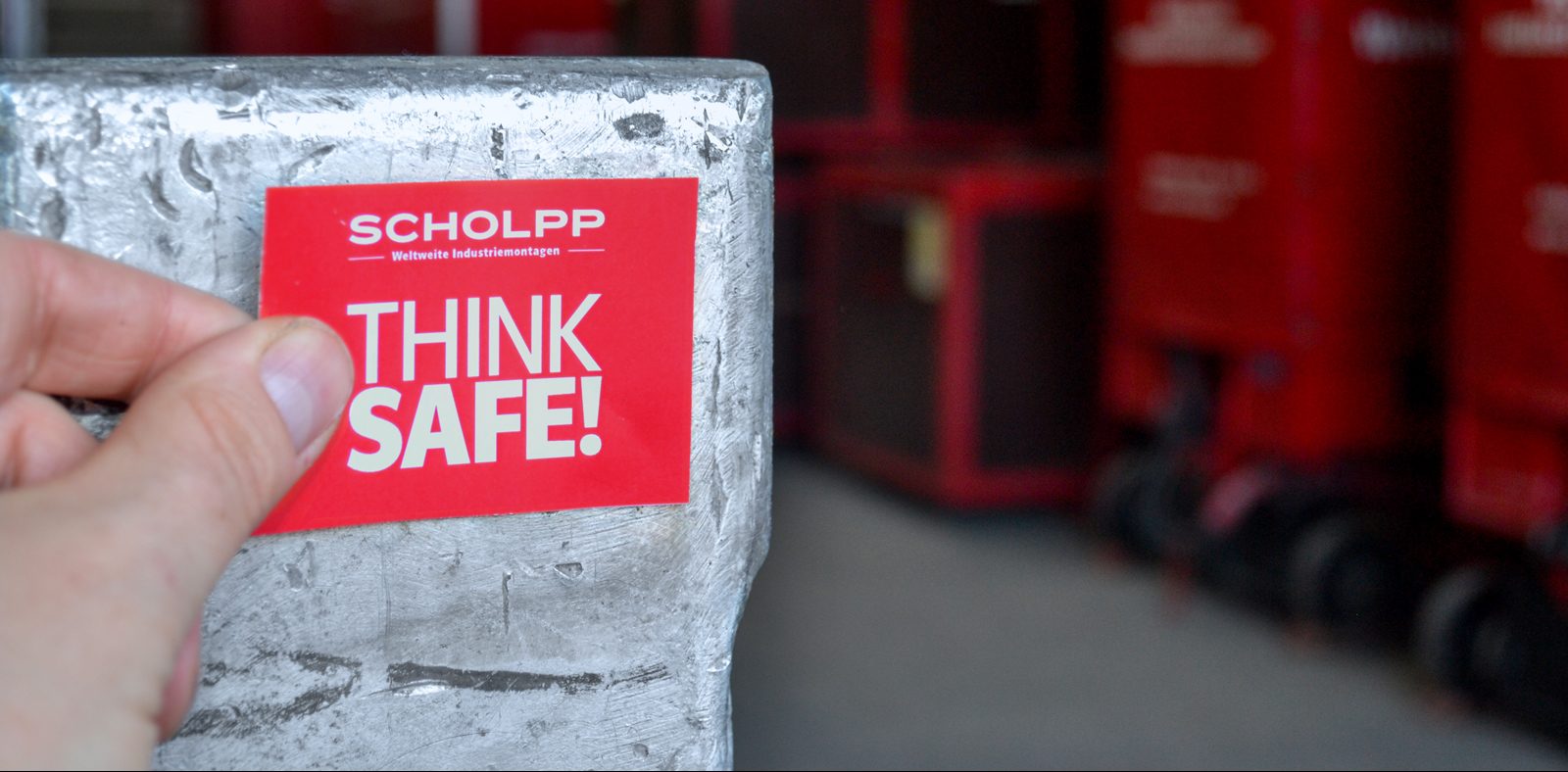In industrial installation, experience and vigilance are crucial components in protecting both people and machinery. SCHOLPP therefore teaches safety management at its own SCHOLPP Academy, among other venues.
On YouTube, fail videos are extremely popular. They show people who have experienced something unexpected in everyday life or at work – sometimes with a slightly painful outcome, but always within reasonable boundaries and nevertheless funny. But when it comes to occupational safety during an industrial installation, a small mistake is no laughing matter. Even lightweight machines can quickly injure a person or be damaged themselves in a careless moment.
That’s why SCHOLPP attaches as much importance to safety management for the protection of its employees as the Secret Service does to the personal protection of the US president – at least that’s what you might think when you look at the effort SCHOLPP puts into occupational safety. “In safety management, we distinguish between regular instruction for all employees and individual safety behavior on an actual construction site,” explains Hartmut Kleinfeldt, senior safety engineer at the industrial installation company.
SCHOLPP Academy: Safety on the curriculum
Whether they’re a new or a seasoned employee, it’s back to school for everyone once a year to learn all about the latest aspects of safety management. The topics are many and varied: membership of professional associations, the correct way to behave in the event of minor injuries and major work accidents, the correct use of our equipment, or the realistic assessment of potential hazards.
It is also important to know how to act properly on the construction site with all the rights and duties that await an employee. “Compliance with the duty of confidentiality, extensive fire protection requirements and our strict regulations concerning quality management are safety topics that we teach – and even setting and observing break times to prevent fatigue and the errors that result from it,” says Hartmut Kleinfeldt.
SCHOLPP is also certified as a specialist company under the German Federal Water Act and is therefore authorized to work on facilities containing substances hazardous to water. These include hydraulic oil, heating oil, acids or alkalis that can pollute the air, soil or water. The measures and technologies used in such situations therefore also feature in SCHOLPP’s safety training courses.
Safe use of equipment
Up to that point, the employees have already learned a lot of theory, but they also have to train their safety knowledge in a very practical way on a piece of equipment or with the special installation apparatus. “It’s critical that our employees are able to operate our equipment safely. That’s why they take their driver’s license for classic items of equipment like forklifts, overhead cranes, and aerial work platforms, and why they practice again and again with hand tools such as fall protection harnesses, chain hoists, and ratchet hoists with a hand-operated lever,” the experienced safety engineer explains.
A legally required license for a lift that simply goes up and down? Sounds a bit excessive, but from Hartmut Kleinfeldt’s point of view, it’s absolutely justified. “An employee must be aware of how to handle loads on the vehicle. Because the risk of the device falling over and you falling out of it is greater than you might think.”
Repetition is an important form of learning. That’s why all employees at SCHOLPP have to refresh their knowledge of safety and new legal regulations every year. For forklift operators, for example, numerous precautions are repeated like a mantra: “Don’t jump off the vehicle; secure the load properly; keep the forks close to the ground, to name but a few – some things just can’t be said often enough.”
Specifics on the construction site
So much for the basics of safety in industrial installation. But each construction site has its own special features, and some SCHOLPP employees work on a different site every day. That’s why the entire crew is briefed on site about the specifics of the project, be it personally by Hartmut Kleinfeldt, by the SCHOLPP project manager or sometimes by the customer themselves. Where do critical lines run? What protective equipment is used at which heights? What exactly do the work steps look like? Which substances, machines and plant are we dealing with? “For example, hydrofluoric acid is used in the production of photovoltaic systems. If you get just a few splashes of it on your hand, you have to treat it immediately – otherwise you die,” says Hartmut Kleinfeldt.
The pressing need for safety measures becomes particularly clear in this case – and with it the motivation that drives Bernd Schröder in his work. “I always tell everyone: A project hasn’t gone well if you’ve done all or even more than you wanted to in one day; it’s gone well if we all go home safe and sound. No one can compensate damaged health. What’s gone is gone.”
Safety is a customer issue, too
But, of course, the project is always important, too. “We want to implement our safety management in such a way that we can offer our customers safe, quality work that is completed on time.” Because when all is said and done, they, too, benefit from the efforts to improve safety. After all, major accidents always put the customer in the media spotlight. “In the worst-case scenario, if an employee falls from a high crane, you don’t hear: There’s been a fatality at installer XY – it’s the customer’s name that you hear,” says Hartmut Kleinfeldt.
And that’s damage that haunts a company for years. That’s why larger SCHOLPP customers in particular have long demanded various plans and documents before placing an order: a risk assessment, an action plan, a pandemic plan, a demolition plan for dismantling, and the authorization certificates of all the employees involved for the vehicles used. As a professional, Hartmut Kleinfeldt welcomes this, while qualifying slightly: “There will never be 100 percent safety. But 99.5 percent is possible.”



Leave A Comment